
Are you sick of long airplane journeys? Well, who wouldn’t be? Flights are long, boring and very tiring. But there is a way, apart from listening to music, that can make your flight interesting, productive and much less tiring: airplane yoga. Airplane yoga are the yoga exercises that can be performed, including airplanes. It lets you meditate and relieves your stress. And, to top it all, what can be a better way to make the most of the least productive time of air travel. Here’s a list of 18 yoga exercises that you can easily perform while seated in an airplane. Follow the below mentioned instructions and relieve stress in every flight and make your flight productive.
Sukhasana: Stress Releasing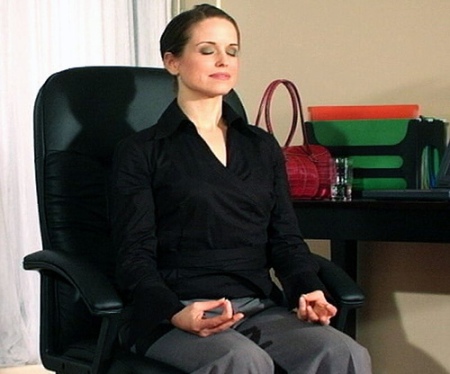
Sukhasana is a deep exhaling exercise. It is performed to release over-anxiety and stress with the exhalation. You can easily carry out this exercise while you are seated. While you are seated keep back straight and your legs crossed, and remember to keep your hands on your thighs. Take a few deep breaths and exhale them out slowly. Keep your eyes closed and repeat the activity six to eight times. Try to concentrate on your breathing while performing this exercise. This will help you relax deeply and is a real stress buster.
Neck Rolls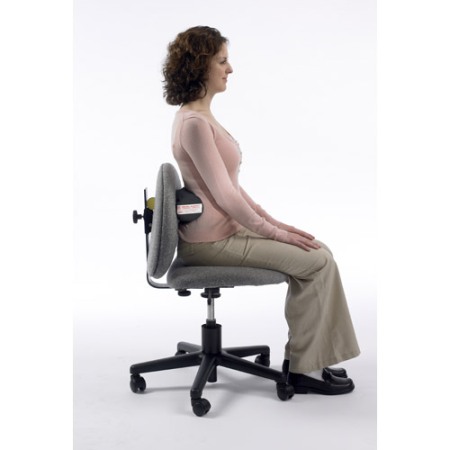
To perform the rolls sit straight on your seat with your spinal cord upright. Keep your hands face down, gently on your thighs. Stretch your neck back slowly while you inhale and slowly stretch it to the front while you exhale. Repeat the same for a few times. While you are seated in an airplane, there is not much movement in your body. This leads to a lot of tension in your neck muscles and shoulders. Neck rolls helps you to release all that tension. This should help to release the tension and help the mobility of your upper body.
Padadhirasana: Emotional Release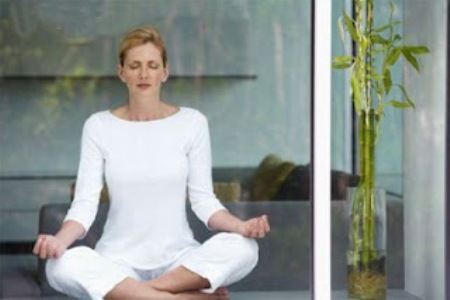
Sit straight with your legs crossed and your hands across your chest locked under your armpits. Slowly raise your shoulders with your face down and lips locked. Breathe deeply with both your nostrils for about 5-10 minutes and relax. This will ensure a calm state of mind. It is important to remember to have a glass of water before you start.
Marjaryasana: Flexibility of Spine
Be seated on the edge of your seat, align your feet with your hips and gently keep your hands on your thighs. Slowly inhale and roll your shoulders to arch your chest upwards and outwards. Roll your spine forward while you are exhaling. Keep your face up and high throughout and try to look at your nose tip. Repeat for about 10-20 times but you can start performing the marjaryasana with smaller repetitions initially.This exercise will help you release the tension and blockage in your spinal column.
Variation on the Ardha Matsyendrasana: Seated Spinal Twist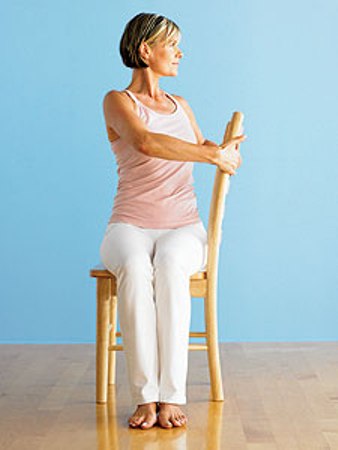
While you are seated on the edge of your seat, place your right knee over the left. Then place your left hand on your right knee and the other on the arm rest. Keep your spinal cord upright while you inhale and turn towards your right side while you exhale. Repeat it for 5-6 breaths and then switch sides. This ensures mobility of your back and creates lightness.
Leg and Hip Movement
While seated, with a straight back, press your left foot to the ground and bend your right knee and carry it on your left thigh. Bring it as close as you can to your chest maintaining the straight back. Hold for about five deep breaths and then tilt your knee outside, opening your hips and placing the opposite palm on the sole of your foot. Press your knee towards the floor while inhaling and upwards while exhaling. Repeat the process for about 10-15 times for each leg.
Lengthen spine: Half forward bend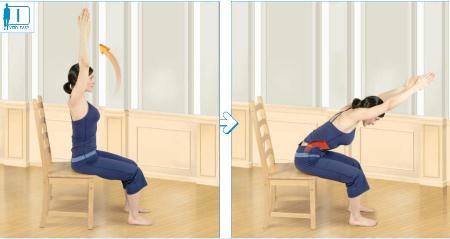
Seated on the edge of the seat with a straight back, press your feet into the ground with your legs aligned with hips. Inhale and raise your arms up and exhale while folding your body halfway forward in the front, with your arms extended and hands joined. Maintain this position and repeat for about 10 breaths. This helps your back and spine.
Shoulder releasing: Eagle arm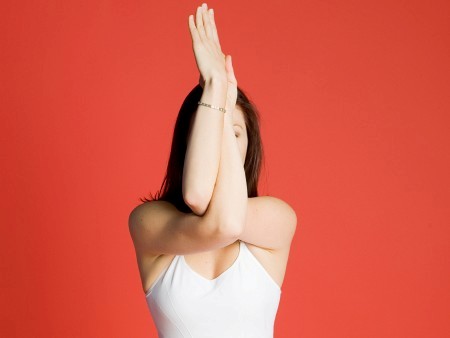
Stretch your arms parallel to the ground with your shoulder blades spread wide. Now place your right arm crossed over your left. Then snug the right elbow into the crook of the left. Next, raise your forearms, your hands crossed and the palms facing each other. This way the thumb of the right hand will face the left hand’s little finger. Stay in this position for about 15-20 seconds. This encourages overall circulation and open the shoulder joints.
Gomuktasana: Shoulder Stretch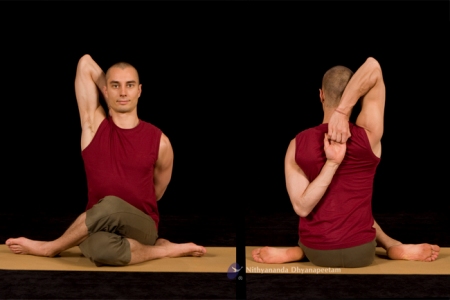
Outstretch your right arm upwards while you are inhaling, bend your elbow and rotate your arm inward and move it backwards. Sweep the arm behind your torso and tuck the forearm in the hollow of your lower back keeping it parallel to your waist while you exhale. Next, stretch your left arm forward, parallel to the floor while you inhale, stretch the arms straight upward. While exhaling try to touch the finger tips of both your hands and try to lock the same if possible. This stretches your shoulder joints for extra flexibility.
Shoulder opening: Interlocked hands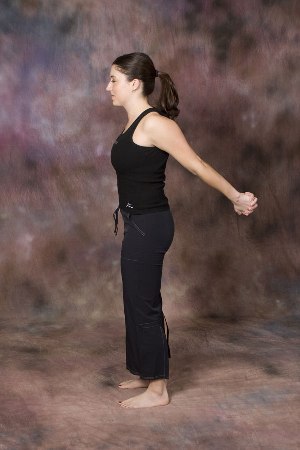
While standing, stretch your arms and slowly roll your shoulders backwards. Now lock your hands behind your back with arms stretched. Then press your feet into the ground and try to press your fists away from your body. Keep breathing deeply and maintain the position for 5-10 breaths.
Uttanasana: Standing forward bend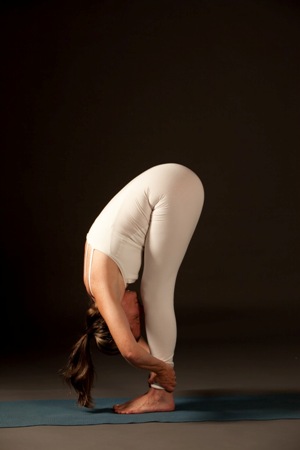
While standing on your feet, legs just a hip distance apart, bend forward with your knees straight and let your hands down. Bend your elbows and let one forearm rest on the other and stretch your back. Hold this position for about 10 deep breaths and then rise slowly. This helps to lengthen your spine.
Thigh stretch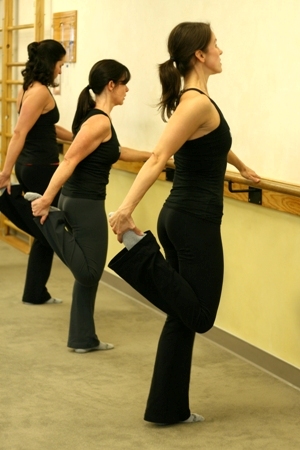
Firstly stand in a normal stance and then bend your right leg inward so that your lower leg is behind your body. Use your right hand to hold your right ankle and pull straight up as much as you can. Stand on the left leg and hold for about 5 breaths and then switch side.
Vrksasana: Tree position
Take a normal standing stance, slowly shift your weight to your left side and bend your right knee and bring your right foot onto your left anklebone. Look straight and press your foot into your thigh. While you are inhaling bring your arms in front and join the hands to imitate the praying posture. Then while exhaling, bring your hands and leg back to the normal position. This gives you an inner stability and clarity.
Virabhadrasana I: Courage and determinaton
You need to stand in the middle of the aisle with your feet together to perform virabhadrasana. Lunge your left leg back and bend your right knee. Raise you arms upwards with your palms-joined. deep breathe for about 5 times and then switch sides. This will help to work out your leg muscles which are otherwise ignored.
Utkatasana: Foundation and Strength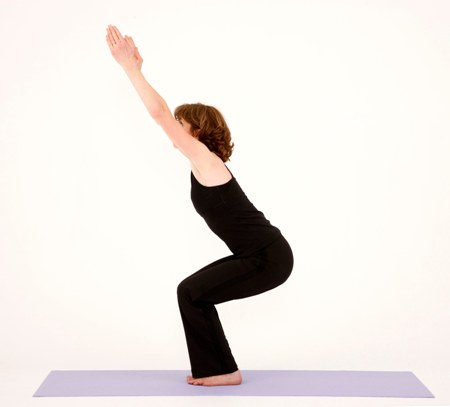
Stand up and slowly try to bring your feet and knees together. Now stretch your arms forward just over your head and take 10 deep breaths. Release and stand back to the normal, initial position, repeat the cycle for 2-3 times. This works out your lower body which otherwise is always stuck to the seat.
Parighangasana Variation: Revitalize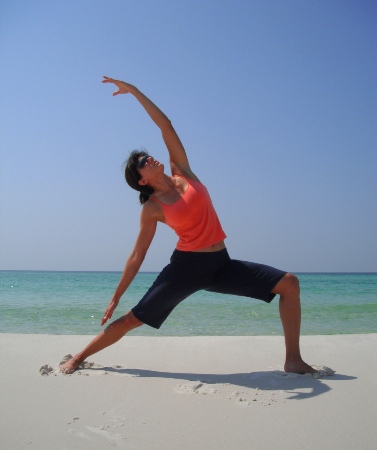
Once you have landed, use the fresh oxygen. Stand straight but with your feet about a hip distance apart. Now inhale and raise your right arm towards the sky and lean your body towards the left side keeping your back straight. Hold the posture for about 5 breaths and then switch sides. This strengthens the muscles between your ribs and your pelvis. It also helps with our breathing.
Virabhadrasana III: Embrace and be Free
While you are standing at the exit, keep your feet together and bend forward and touch the ground with your fingertips. Slowly shift your body weight towards the left and raise your right leg off the floor towards the back. Slowly straighten your right leg and firmly press your left leg into the ground. Try to maintain a balance with your hands stretched just like the wings of an airplane. This is a pretty advanced asana or the exercise so don’t be harsh on yourself initially but practice it regularly and gradually.I will help to build your inner strength.
Take a stroll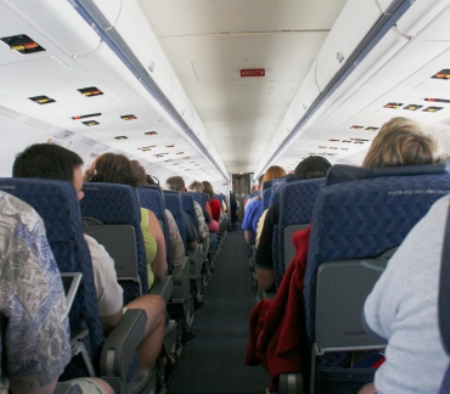
After every hour, check if the belt signs are off and then take a stroll around the cabin to move your legs a bit. This will ensure that the minimum body movement required has been taken care of.




